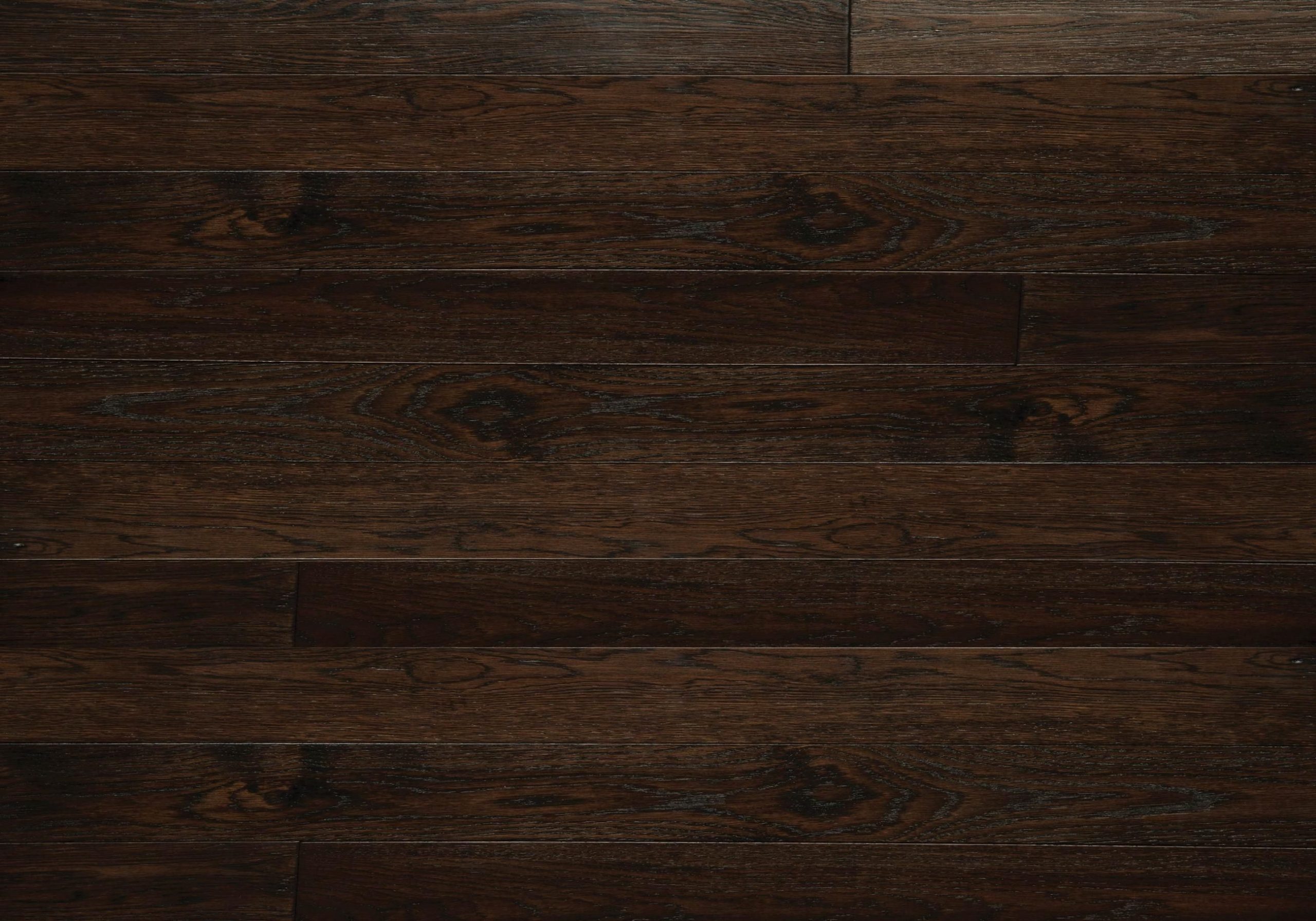Dark wood flooring exudes timeless elegance and adds a touch of history to your home. This comprehensive guide will walk you through everything you need to know, from selecting the perfect shade and species to ensuring your floors last a lifetime.
Selecting Your Perfect Dark Wood Floors
Choosing the right dark wood floor can feel overwhelming. This section breaks down the key decisions.
Choosing Your Wood Type
You’ll first need to decide between two primary types of wood flooring:
- Solid Hardwood: Milled from a single piece of wood, solid hardwood offers exceptional durability and ages beautifully. It can be refinished multiple times, potentially lasting for generations.
- Engineered Hardwood: This option features a real wood veneer bonded to a plywood core. It’s more stable than solid wood, making it suitable for areas with moisture fluctuations, like basements or kitchens. It’s often a more budget-friendly option.
Choosing Your Wood Species
Each wood species has a unique character, expressed in its color and grain:
- Oak: A classic choice available in warm browns to cool grays. Known for its attractive grain patterns and impressive durability.
- Hickory: With reddish-brown tones, knots, and color variations, hickory offers a rustic, warm feel and incredible toughness.
- Walnut: Walnut’s rich, chocolatey tones bring instant elegance. It’s a softer wood requiring a bit more care.
- Mahogany: This exotic wood adds a luxurious feel with its deep reddish-brown hues and intricate grain, making it a true statement piece.
- Cherry: Cherry creates a warm, inviting atmosphere with its reddish-brown color that deepens over time.
Choosing Your Finish
The finish impacts both the appearance and durability of your floor:
- Oil-Based Finish: Penetrates the wood, enhancing the natural grain and creating a warm look. It requires more maintenance but develops a rich patina.
- Water-Based Finish: Sits on top of the wood, providing a protective layer. It dries quickly and emits fewer fumes.
- Polyurethane Finish: Known for exceptional durability and resistance to wear. Available in various sheens, from matte to high-gloss.
Designing with Dark Wood Floors
Dark wood floors offer surprising versatility:
Room Size Considerations
While some believe dark floors make rooms appear smaller, this isn’t always the case. With ample natural light and the right décor, they can create a sense of expansiveness and depth, framing the room’s elements.
Décor Style Pairing
Dark wood floors complement a wide range of styles, from modern to traditional, providing a neutral backdrop.
Cabinetry Coordination
Dark floors and white cabinets offer a striking contrast, adding drama and sophistication, especially in kitchens and bathrooms.
Seeking a smart, space-saving housing solution? Explore our innovative cubicle house.
For a unique living experience blending aesthetics and functionality, check out the dadu from our architecture collection.
Weighing the Pros and Cons of Dark Wood Floors
Advantages of Dark Wood Floors
- Timeless Elegance: Dark wood floors exude sophistication and never go out of style.
- Durability: Hardwood offers exceptional longevity, withstanding years of foot traffic.
- Increased Home Value: Dark wood floors are a desirable feature, potentially boosting resale value.
Disadvantages of Dark Wood Floors
- Visibility of Dust and Scratches: Dark floors require regular cleaning to maintain their appearance.
- Potential for Smaller Appearance: In rooms with limited natural light, dark floors may make the space feel smaller. Careful planning and lighting can mitigate this.
Cost, Installation, and Maintenance
Cost and Installation Overview
Dark wood flooring costs vary based on species, finish, and installation complexity. Materials typically range from $5 to $15 per square foot, sometimes more for exotic woods. Installation methods include nail-down, glue-down, and floating.
DIY vs. Professional Installation
While experienced DIYers can install flooring, professional installation is often recommended, especially for solid hardwood, to ensure a flawless finish.
Maintaining Your Dark Wood Floors
Proper maintenance is crucial for longevity:
- Regular Cleaning: Frequent sweeping or vacuuming removes dust and debris that can scratch the surface.
- Gentle Cleaning Products: Use a pH-neutral wood floor cleaner. Avoid harsh chemicals.
- Protective Measures: Use mats at entrances, area rugs in high-traffic zones, and furniture pads to minimize wear.
Are Dark Wood Floors a Good Idea?
Dark wood floors offer richness and drama but may not be suitable for every home. Consider factors like personal style, natural light, and maintenance commitment.
The Allure of Dark Wood
Dark wood floors create a cozy, sophisticated ambiance, working well with various décor styles. However, they can absorb light, potentially making a room feel smaller, especially if it lacks natural light. Brighter wall colors, mirrors, or additional lighting can compensate for this.
Maintenance Considerations
Dark floors show dust and scratches more easily, requiring more frequent cleaning. They may not be ideal for homes with pets or children prone to rough play.
Pros and Cons Summary
| Pros | Cons |
|---|---|
| Luxurious and sophisticated look | Shows dust, scratches, and dirt more easily |
| Adds warmth and depth | Can make a room feel smaller and darker |
| Versatile, complements various décor styles | Requires frequent cleaning and maintenance |
| Timeless and enduring appeal | Scratches may be more noticeable |
Expert Opinions and Ongoing Research
Some experts suggest dark floors are a bold choice requiring extra maintenance. Others advise caution for smaller or dimly lit spaces. Ongoing research on interior design trends and the psychological impact of color continues to inform our understanding. Careful consideration of the pros and cons is crucial.
Are Dark Wood Floors Still in Style?
Dark wood floors have enjoyed long-lasting popularity due to their richness and versatility. While design trends evolve, dark wood floors maintain a classic appeal.
Enduring Elegance
Dark wood floors offer a sophisticated vibe, complementing various decorating styles, from modern to farmhouse. Their durability and potential to increase home value further contribute to their appeal.
Maintenance and Light Considerations
One potential drawback is that they show dust, pet hair, and scratches more easily, requiring regular cleaning. They can also absorb light, making a room feel smaller, especially if it lacks natural light. The specific shade of dark wood can impact this effect, with cooler tones potentially making a room feel larger.
Feature Comparison
| Feature | Pros | Cons |
|---|---|---|
| Appearance | Timeless, elegant, versatile, adds depth | Shows dust, scratches, and pet hair more readily |
| Durability | Long-lasting, increases home value | Can be more expensive than lighter options |
| Room Impact | Creates a dramatic ambiance | May absorb light, making rooms feel smaller |
| Maintenance | Easy to clean with proper techniques | Requires more frequent cleaning |
| Versatility | Complements various décor styles | May not be suitable for all room sizes or lighting conditions |
Ongoing Research and Innovation
Ongoing research in flooring materials and finishes is constantly evolving, leading to more scratch-resistant and easier-to-clean options. Different wood species and installation techniques are also being explored.
How to Get Dark Wood Floors
Achieving the look of dark wood floors can be done in several ways:
1. Staining Existing Floors
Staining existing wood floors is a budget-friendly way to achieve a rich, dark color. This involves sanding the existing finish, applying the stain, and sealing it with a protective finish. Test the stain in a hidden area first to ensure the desired color.
2. Pre-Finished Dark Wood Flooring
Pre-finished flooring arrives already stained and sealed, offering quick and easy installation. While color choices might be slightly limited, the convenience is a major advantage.
3. Unfinished Dark Wood Flooring
Unfinished flooring allows complete control over wood species, stain color, and finish. However, it requires on-site staining and finishing, which demands more time and effort. Professional installation is often recommended.
Pros and Cons of Dark Wood Floors
| Pros | Cons |
|---|---|
| Adds warmth and elegance | Can show dust and scratches more easily |
| Durable and long-lasting | Can make a room feel smaller |
| Can be refinished | Often more expensive |
Continuously evolving finishes and techniques, like scratch-resistant and easy-to-clean options, are emerging in the flooring industry. Researching the latest innovations is recommended before making a decision. Choosing the best method depends on individual needs and preferences, considering budget, DIY skills, and overall home style.
- How to Remove Water Stains from Fabric: A Complete Guide - April 26, 2025
- How to Get Motor Oil Out of Clothes: Proven Methods & Expert Tips - April 26, 2025
- How to Get Deodorant Out of Black Shirts: Easy Stain Removal Guide - April 26, 2025










